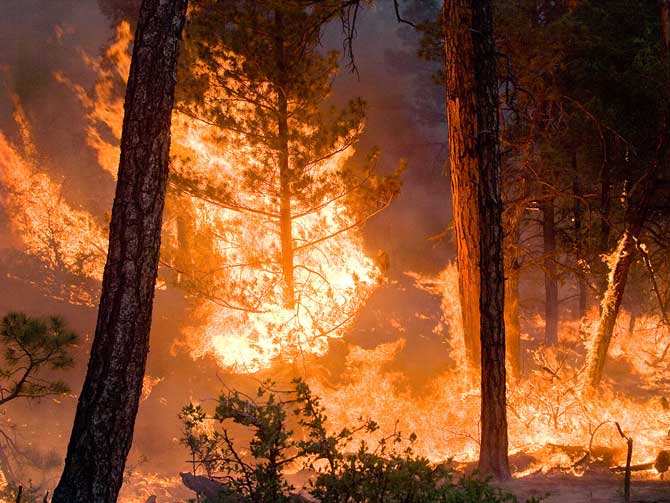
Credit: Kari Greer/USFS Gila National Forest
It was heartbreaking to follow the news about the wildfires in California this fall. Drought and hot weather, indicative of a warming world, have set the stage for bad wildfires in the West for years.
PG&E, California‘s biggest power utility, has been responsible for a number of wildfires because of faulty equipment in recent years and the company’s liability for these fires has driven them to declare bankruptcy as they figure out how to try to fireproof, as best they can, thousands of miles of lines. With this liability in mind, as dry, hot, windy conditions came upon California this October, PG&E preemptively cut power through the lines to millions of customers to try to reduce the risk of their lines starting a fire.
In late October, while power was out to large numbers of customers for such a preemptive outage, a massive fire broke out in Sonoma County (the Kincade Fire), which ended up burning nearly 80,000 acres, injuring four people, destroying and damaging hundreds of structures, and prompting the evacuation of nearly 200,000 people.
The whole situation there got me thinking about the benefits of distributed generation, energy storage, and microgrids in the face of climate risks and major disasters. Apparently, there has been a big surge in customer interest of solar+batteries in the past couple months, since PG&E has carried out the planned outages–and it seems for good reason.
From the customers’ angle, the benefits of having electricity at your house while the grid goes down would be enormous. The benefits range from simple comfort to life-critical power for medical devices and everything in between (being able to keep your cell phone charged and stay in touch/get updates about the disaster; keeping food and medicine in your freezer and fridge from spoiling; being able to stay comfortably in your home until evacuation may become necessary, etc.).
From the utilities’ and public safety angles, being able to reduce the load on the lines and minimize the number of lines minimizes wildfire risk and liability.
And from the climate angle, transitioning to more distributed renewables and batteries instead of fossil fuel power generation would, of course, help mitigate global warming pollution that contributes to fire risk, as well.
What’s happening in California with the wildfires reminds me of how the Southeast is forced to deal with hurricanes. As someone who has been evacuated for hurricanes three times in the past four years, I really feel for the California evacuees. I wonder if these rounds of fires and PG&E’s liability will result in some serious reexaminations of the traditional power grid and experiments with microgrids–and perhaps provide lessons learned that the Southeast can benefit from as well. I hope so.
The post Possibilities of Renewables + Storage Shine in Face of Wildfires appeared first on SACE | Southern Alliance for Clean Energy.
